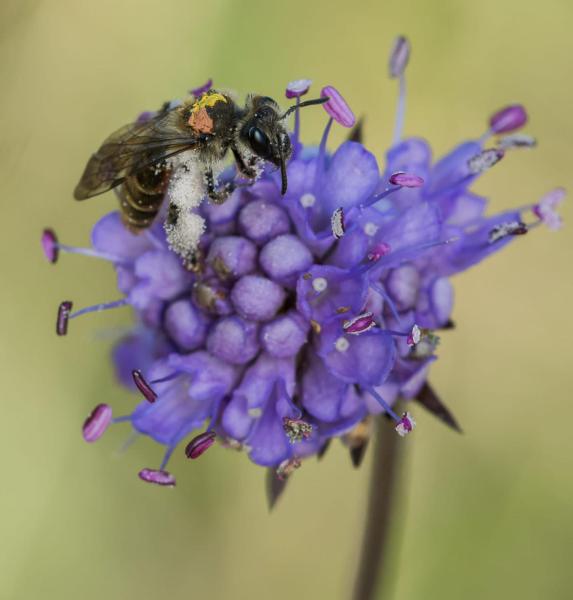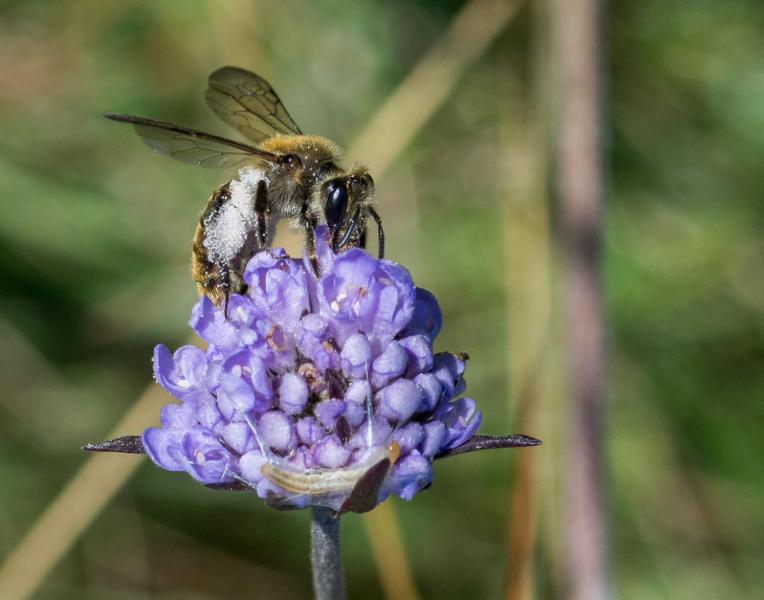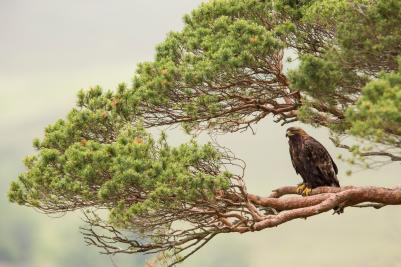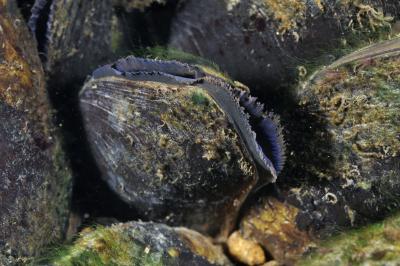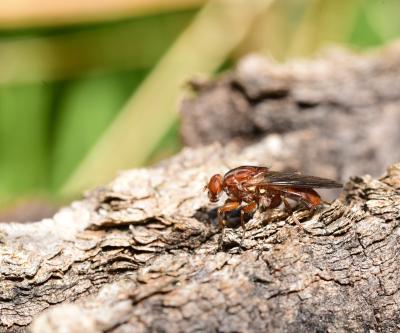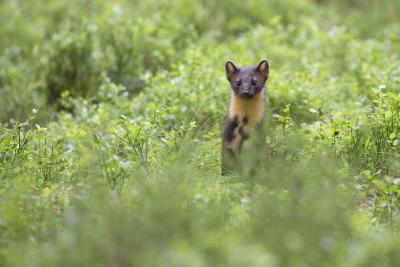Scabious mining bee
Andrena marginata

When it comes to bees, it’s not just the well-known bumble and honey varieties that buzz around the UK’s plants and flowers. In fact, we have around 270 different species. The largest group is the mining bees, which burrow underground to make their nest.
Factsheet
Lifespan: One to two years
Best time to spot: August and September
The scabious mining bee, one of the rarest bees in Scotland, belongs to this group. It’s found in only a few places in the Scottish Highlands, as well as in a few places in south and southeast England and south Wales. These habitats don’t link up with each other, however, so the scabious mining bee’s future could be at risk if individual colonies don’t do well.
This is one of the reasons this tiny invertebrate is on the Scottish Biodiversity List, which is a list of animals, plants and habitats considered to be of principal importance for biodiversity conservation.
At only 7mm long, these slim little bees would be hard to spot even if there were plenty of them around. The female has orange hair on the head and upper body, and a lower body that varies in colour from bee to bee, from bright orange, to dark with brown stripes.
Males are slightly smaller than the female, and have a white patch on the front of the face, though you would probably need a magnifying glass to see this! Both sexes have golden hair on their thorax, around their middle.
Did you know?
When it comes to bees, it’s not just the well-known bumble and honey varieties that buzz around the UK’s plants and flowers. In fact, we have around 270 different species. The largest group is the mining bees, which burrow underground to make their nest.
Factsheet
Lifespan: One to two years
Best time to spot: August and September
The scabious mining bee, one of the rarest bees in Scotland, belongs to this group. It’s found in only a few places in the Scottish Highlands, as well as in a few places in south and southeast England and south Wales. These habitats don’t link up with each other, however, so the scabious mining bee’s future could be at risk if individual colonies don’t do well.
This is one of the reasons this tiny invertebrate is on the Scottish Biodiversity List, which is a list of animals, plants and habitats considered to be of principal importance for biodiversity conservation.
At only 7mm long, these slim little bees would be hard to spot even if there were plenty of them around. The female has orange hair on the head and upper body, and a lower body that varies in colour from bee to bee, from bright orange, to dark with brown stripes.
Males are slightly smaller than the female, and have a white patch on the front of the face, though you would probably need a magnifying glass to see this! Both sexes have golden hair on their thorax, around their middle.
Did you know?
Each scabious mining bee nest, built in sandy banks without much vegetation, has a main tunnel with small chambers branching off. The female lays her eggs in these chambers.
She is specially built to feed the hatched larvae with nectary pollen balls: on her back legs are long white hairs which are perfect for pollen collection. These make her look as if she’s wearing white fluffy trousers! Male bees don’t have these leg hairs, as they don’t feed the larvae.
This bee’s unusual name comes from an unusually named flower: the devil’s-bit scabious. This violet-headed wildflower is an essential cog in the wheel of the scabious mining bee’s survival, as it’s the only plant that females use for pollen collection. When the devil's-bit scabious flowers, usually in August and September, the scabious mining bee emerges from its burrow and flies around close to its nest to collect pollen.
The pollen is a protein destined for the larvae; adult bees survive solely on carbohydrates, which they get from the nectar of a variety of other flowers.
Little more is known about the scabious mining bee due to its short flight period and restricted range. Experts generally agree that its numbers are suffering due to a decrease in the spread of devil’s-bit scabious: since the second world war, the UK has lost 97% of its wildflower habitats.
Conservation efforts that help this species include reducing grass-cutting and prioritising native wildflower growth.
The Rare Invertebrates in the Cairngorms (RIC) is a partnership project working to reverse the fortunes of the aspen hoverfly, along with several other rare insects in the Cairngorms. To find out more about the project’s work and get involved, visit: https://rare-inverts-rspb.hub.arcgis.com





